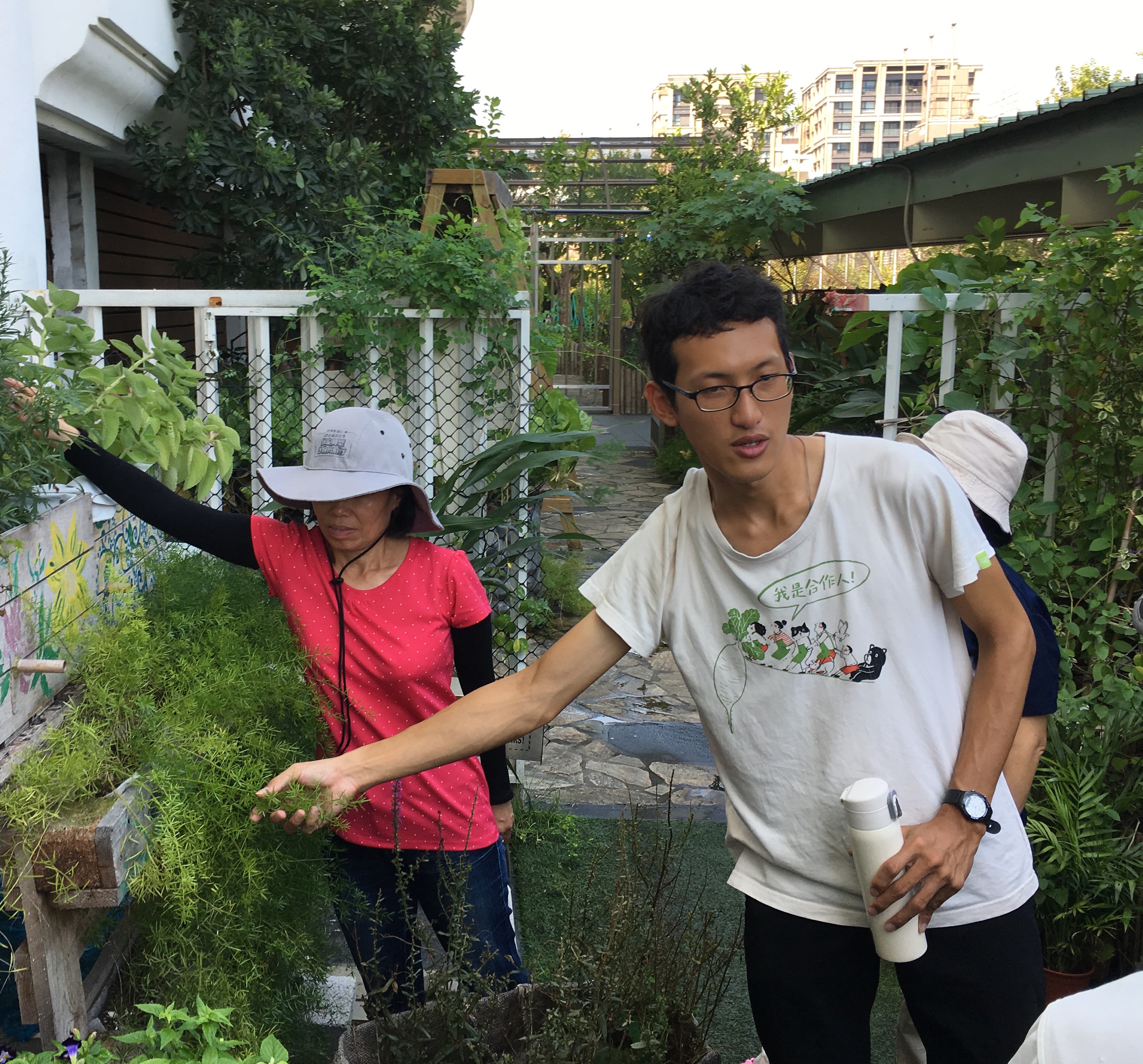|
Author: WEITING SHENG
Turn to the lanes or climb up the stairs from busy roads, a wild patch of green appears in front of you. People laughing and chatting, welcome to the community farm in Taipei.
Farmland. Irrigation. Fertilizer. Those key words may not seem related to the concrete jungle Taipei citizens living in. But at some point, the unobtrusive corners, rooftops, and even government-owned vacant lands have been cultivated into vegetable gardens by city residents. With the effort between resident-raised, policy support and land release, “Community Garden” has brought the possibilities of punctual urban greenery.
In 2014, the social groups and people who pays attention to urban farming established Farming Urbanism Network (FUN), to advocate the concepts of urban farming in Taiwan. A year later, the Department of Economic Development in Taipei City Government authorized “Community Garden Promotion Center”at Yuanshan, extending the previous actions of the society. The classic version of Garden City from Ebenezer Howard, planning green belt with top-down measures, is not the trend in Taipei at present. Taipei City government encouraged citizens’ participation instead of proceeding proactive planning measures. One can find basic ecology and farming classes, the extension of farming preparation (like rain water collection, vegetable box production) and the application after farming (like food & agriculture education, urban beekeeping) in the promotion center, you can start from zero!
The chairman of Fujian community development association Lin Ji-Hung exhibited “Xingfu Community Farm”, the urban farm he established with local residents and his partner Liu Qi-Ming in 2012. This vegetable garden has grown from merely 48 patches of vegetation to a community garden 168-household co-farming nowadays. The site is about 1650 square meter.“The initial movement is the most difficult part. When someone proposed, others followed, that’s how things work out. It was a vacant land owned by the military, we called out the residents and fought for the land. It was such a memorable process,” said Chairman Lin.
The circular planning of the vegetable garden includes: a secret garden that creates friendly barrier between the farm and vehicle ways, a walking path for elderly circling the farm, and a natural lawn. Seniors can find themselves a quiet place doing exercise in the middle of urban area, while the lawn can be a buffer of the farming space. The maintenance of public space is taken care by eleven resident teams. They take turns to clean the space and maintain the environment. Such a system is a result of residents condense, modifying throughout the years. “There are still ten to twenty households queuing up for the chance to plant their own vegetables!” Chairman Lin said, pointing the eggplants, sweet potato leaves and papayas in the farm.

The rise of grassroot power is the motivation of the community farm, while the follow-up policy is critical for promoting the green spots. There is a Taiwanese saying goes: “Worship the tree when you eat the fruit, worship the field when you eat the rice.” It not only expresses farmers’ effort, but also points out the effort building up edible landscape in the city. The knowledge of farming is huge: fertilizing, irrigation, the pairing of plants… and that is why we need a sustainable platform of community farming knowledge.
There are several types of community farms: “Little farmland” in schools, “Green rooftop”of households or institutions, and “Happy farm”on the vacant lands. All kinds of sites opened up the possibilities of garden city, and the imagination of all ages. Releasing lands to community farms is a developing process. Under the negotiation between central and local government, the sustainability of urban farmland is hoping to continue on the premise that land released. It can ensure the farming right of people, and even improve the space demand of urban community empowerment. In the evening, people come home to take care of their vegetables. The greetings and chats are the most natural and sincere community picture we ever observed.

A happy community farm contains garden images of the residents as well as neighbor interactions. The cooperation of the government and civil society is all we need to continue the sustainable operation.
Authorization in this article:CC3.0 BY-NC-SA
|



